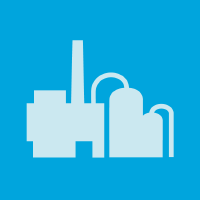Topic Menu
► Topic MenuTopic Editors



Emerging Solutions for Water, Sanitation and Hygiene
Topic Information
Dear Colleagues,
Water resource preservation is an important and popular topic with international attention. Achieving harmony between water and human activity is a goal that numerous scientists are chasing. This topic aims to bring leading researchers together, and provides an open platform for researchers to discuss and share the latest trends, innovations, concerns, and research outcomes on all topics of water, sanitation, and hygiene.
Prospective researchers are invited to submit original and unpublished results of constructive, conceptual, experimental, empirical, or theoretical work in all fields of water, sanitation, and hygiene. Novel research papers with tables, figures, and references are expected to be submitted for this topic.
This includes papers related to the transport and modelling of bacterial pollution in drainage networks and in coastal zones and the impact of climate change on freshwater bacterial quality as well as the impact of floods and other hazardous events in the transport of pathogens.
Agriculture and aquaculture are the industries which serve the increasing food demand of the growing population and their collaborative activity will produce sustainable and healthy food. A range of pollutants are excreted with animal waste, including nutrients, pathogens, natural and synthetic hormones, veterinary antimicrobials, and heavy metals, which can enter local farmland soils, surface water, and groundwater during the storage and disposal of animal waste, and pose direct and indirect human health risks. Water quality and biological factors strongly affect the growth of fish in aquaculture, determining ecosystem health and disease occurrence in cultured fish. A pathogen-free water source is essential for success in aquaculture. Therefore, disinfection of water before use and wastewater before it is discharged is necessary to avoid contamination of the environment with pathogens.
Submissions to the topic will be submitted to a peer review process before final publication. Submitted papers must not be processed by any other publication at the same time. The final decision for paper publication will be made by peer review reports, Topic Editors, and the Editor-in-Chief in case of a conflict of interest. Pulished full-text papers will be available online on the topic website.
We sincerely hope that you will contribute your outstanding research to us and we look forward to assisting you in spreading your precious results.
Prof. Dr. Panagiotis Karanis
Dr. Layla Ben Ayed
Dr. Eleni Golomazou
Prof. Dr. Patrick Scheid
Dr. Ourania Tzoraki
Dr. Anna Lass
Dr. Muhammad Shahid Iqbal
Topic Editors
Keywords
- current technology and water treatment applications
- sustainable management of water, sanitation, public health
- disaster risk management—implications for water, sanitation, and hygiene (WASH)
- linking water, nutrition, and health
- transformative technologies in water, sanitation, and hygiene
- urban water, waste water, ground water, sanitation
- wastewater microbiology (viruses, bacteria, parasites, others)
- water sanitation and One Health
- water supply, analysis, safety, testing
- aquaculture, agriculture
- bacterial modelling, faecally derived microorganisms in river basins
- impact of climate change on freshwater microbial quality
- modelling faecal contamination in drainage networks
Participating Journals
| Journal Name | Impact Factor | CiteScore | Launched Year | First Decision (median) | APC |
|---|---|---|---|---|---|

ChemEngineering
|
2.5 | 4.7 | 2017 | 17.2 Days | CHF 1600 |

Clean Technologies
|
3.8 | 4.5 | 2019 | 26.6 Days | CHF 1600 |

International Journal of Environmental Research and Public Health
|
- | 5.4 | 2004 | 29.6 Days | CHF 2500 |

Pollutants
|
- | - | 2021 | 21.7 Days | CHF 1000 |

Water
|
3.4 | 5.5 | 2009 | 16.5 Days | CHF 2600 |

MDPI Topics is cooperating with Preprints.org and has built a direct connection between MDPI journals and Preprints.org. Authors are encouraged to enjoy the benefits by posting a preprint at Preprints.org prior to publication:
- Immediately share your ideas ahead of publication and establish your research priority;
- Protect your idea from being stolen with this time-stamped preprint article;
- Enhance the exposure and impact of your research;
- Receive feedback from your peers in advance;
- Have it indexed in Web of Science (Preprint Citation Index), Google Scholar, Crossref, SHARE, PrePubMed, Scilit and Europe PMC.





